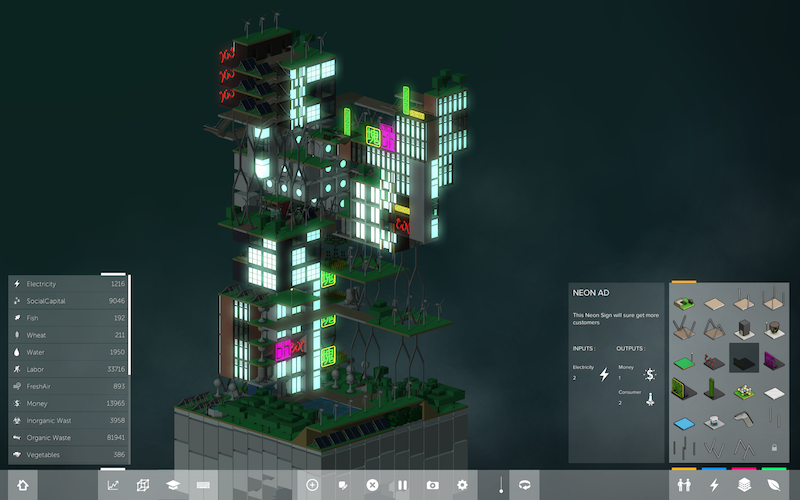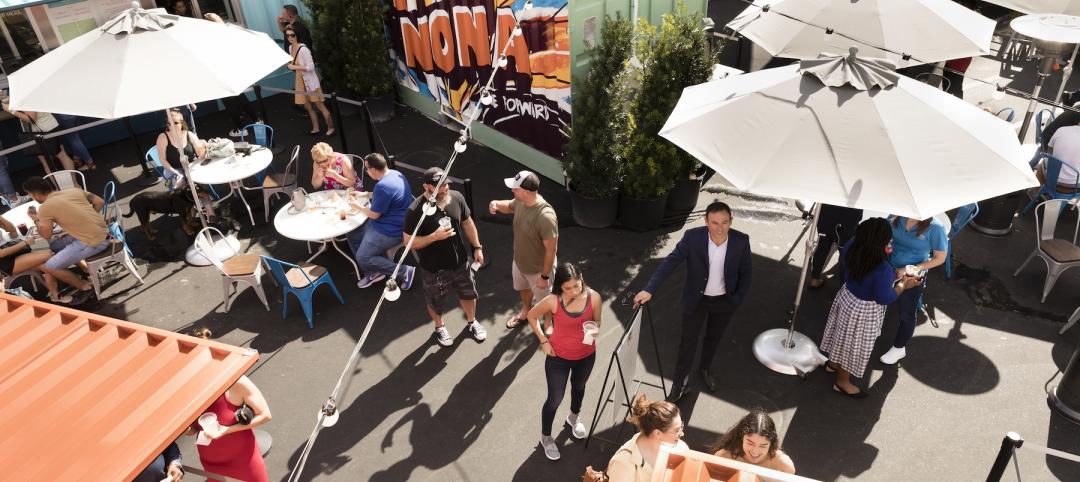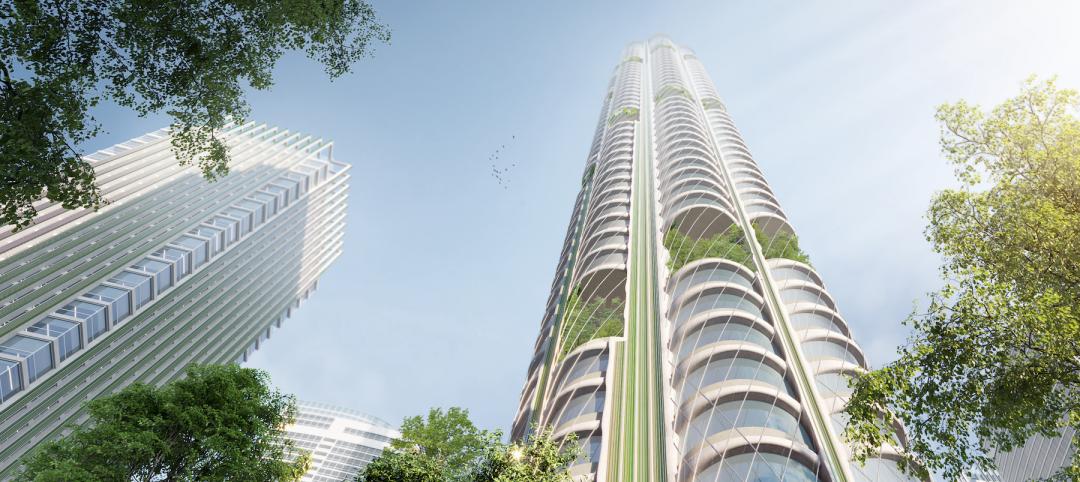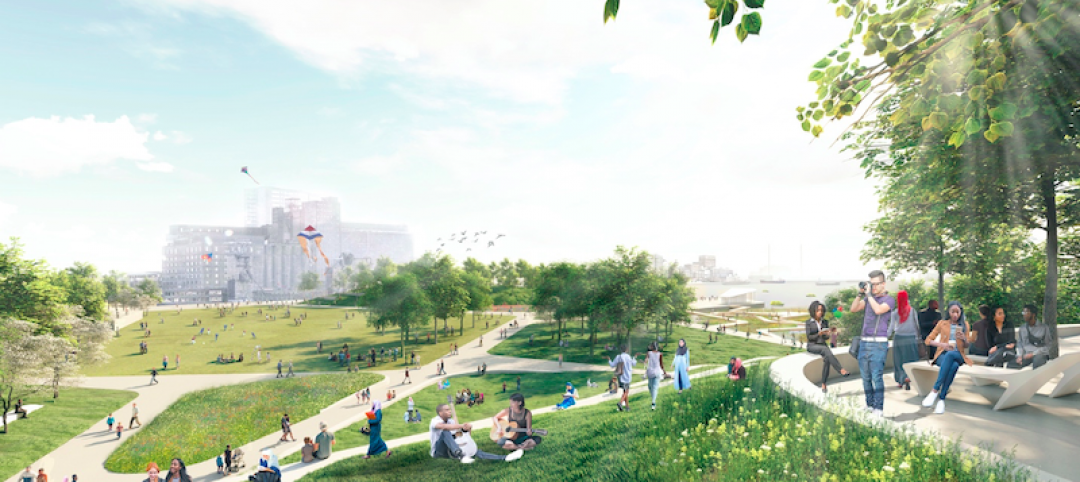Think of those ultra-sped up videos we have all seen, the ones that show a plant poke the first of its leaves through the soil, grow and flower, and then, petal by petal, begin to decay. It is a vexingly entertaining, and, by more dramatic accounts, beautiful thing to watch. It is also the same mentality game developer Jose Sanchez is using in Block’hood, a neighborhood simulator where the city is treated much in the same way as the growing and dying flower; as a living entity.
As motherboard.com reports, where Block’hood differs from games, such as SimCity, that came before it, is in where the complexity comes from. For SimCity, the game becomes more challenging as the city becomes larger and the possibility of an earthquake, flood, or alien invasion becomes even more devastating to the ever-growing system of roads, power plants, and buildings.
Additionally, SimCity is a game of supply and demand resource management. If you want to build that new high-rise, you are going to need to increase your electricity supply. Before people begin living in those houses, they need access to clean water. Controlling supply and demand is simple early on but grows more complicated as the city grows larger.
But Block’hood’s complexity is not born of sheer size or managing supply and demand. Instead, the challenge arises from managing the inputs and outputs of each addition you make to your block.
In the same way plants require different inputs and outputs of nutrients in the soil, sunlight, water, carbon dioxide, and oxygen, so too do cities. For example, if your neighborhood needs fresh air you will want to plant more trees. The game allows you to select from either “Dense Trees,” “Two Trees,” or “Trees,” (which is one single tree). Dense trees will provide a fresh air output of 4, while two trees will give a fresh air output of 1.5, and the single tree will provide a fresh air output of 1. Seems simple enough, go with the dense trees, right?
 Image courtesy of plethora-project.com
Image courtesy of plethora-project.com
But don’t forget, everything also has an input. While dense trees provide a high fresh air output, they also require the highest input of water, at 3. Additionally, their secondary output of leisure is a measly 1. Two trees requires half as much water, 1.5, to produce half as much fresh air, 2, but will also give a bit more leisure at 1.5. While the single tree only provides one fresh air, it only costs 1 water and also provides a 2 in the leisure category.
If your head is spinning, realize that is just one category and you also need to manage resources such as electricity, labor, money (yes, money is not an end game here, but a resource itself), organic waste, consumer, and greywater. If you fall behind on input requirements for whatever you may be building your neighborhood will begin to decay. Again, think of it as providing a plant with too much water and not enough sunlight, or an ample amount of water and light, but planting it in soil that is bereft of nutrients.
Sanchez hopes the game will have a positive impact on the future of designing, revitalizing, improving, and balancing specific inputs and outputs associated with cities.
As Sanchez tells Motherboard’s Richard Moss, ”Modernism was always thinking of how you would have this area for work, this area for leisure, but if you open up the problem of how to recombine different parts of the city I think people would be able to come up with all sorts of interesting ideas.”
Block’hood is a game of blocks, each with its own specific input and output values, and it is up to the player to make the whole that is created (meaning the city block or neighborhood) greater than the sum of its parts.
 Image courtesy of plethora-project.com
Image courtesy of plethora-project.com
Related Stories
Multifamily Housing | Mar 29, 2022
Here’s why the U.S. needs more ‘TOD’ housing
Transit-oriented developments help address the housing affordability issue that many cities and suburbs are facing.
Urban Planning | Feb 14, 2022
5 steps to remake suburbs into green communities where people want to live, work, and play
Stantec's John Bachmann offers proven tactic for retrofitting communities for success in the post-COVID era.
Urban Planning | Feb 11, 2022
6 ways to breathe life into mixed-use spaces
To activate mixed-use spaces and realize their fullest potential, project teams should aim to create a sense of community and pay homage to the local history.
Urban Planning | Jan 25, 2022
Retooling innovation districts for medium-sized cities
This type of development isn’t just about innovation or lab space; and it’s not just universities or research institutions that are driving this change.
Urban Planning | Dec 15, 2021
EV is the bridge to transit’s AV revolution—and now is the time to start building it
Thinking holistically about a technology-enabled customer experience will make transit a mode of choice for more people.
Designers / Specifiers / Landscape Architects | Nov 16, 2021
‘Desire paths’ and college campus design
If a campus is not as efficient as it could be, end users will use their feet to let designers know about it.
Urban Planning | Nov 11, 2021
Reimagining the concrete and steel jungle, SOM sees buildings that absorb more carbon than they emit
The firm presented its case for a cleaner built environment during the Climate Change conference in Scotland.
Urban Planning | Aug 16, 2021
Building with bikes in mind: How cities can capitalize on the pandemic’s ‘bike boom’ to make streets safer for everyone
Since early 2020, Americans have been forced to sequester themselves in their homes with outdoor activities, in most cases, being the sole respite for social distancing. And many of people are going back to the basics with a quintessential outdoor activity: biking. Bike sales absolutely skyrocketed during the pandemic, growing by 69% in 2020.
Resiliency | Jun 24, 2021
Oceanographer John Englander talks resiliency and buildings [new on HorizonTV]
New on HorizonTV, oceanographer John Englander discusses his latest book, which warns that, regardless of resilience efforts, sea levels will rise by meters in the coming decades. Adaptation, he says, is the key to future building design and construction.
Urban Planning | May 3, 2021
SWA/Balsley unveils Nelson Mandela Park Master Plan for Rotterdam
The conceptual plan provides much-needed central neighborhood and civic open space in the city’s South Maashaven district.











![Oceanographer John Englander talks resiliency and buildings [new on HorizonTV] Oceanographer John Englander talks resiliency and buildings [new on HorizonTV]](/sites/default/files/styles/list_big/public/Oceanographer%20John%20Englander%20Talks%20Resiliency%20and%20Buildings%20YT%20new_0.jpg?itok=enJ1TWJ8)





